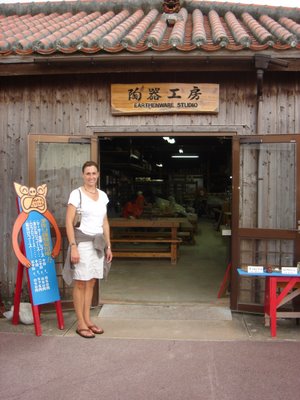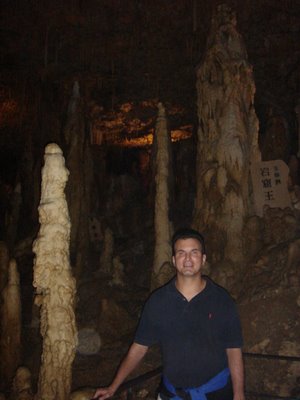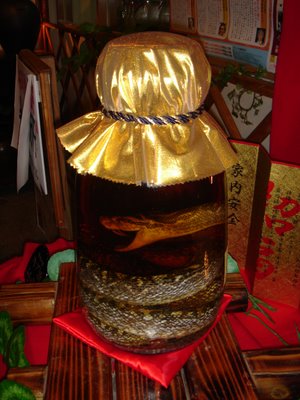Over the Labor Day weekend Beth and I visited Okinawa World.
Okinawa World, also known as the Culture Kingdom Gyokusendo or the Gyokusendo cave, is the largest Okinawan culture theme park on the island.
Okinawa World is located about 40 minutes south of Naha and has 10 main attractions, including tropical orchards, traditional crafts village, Ryukyu glass blowing, crafts and pottery kiln, large shopping center, Habu snake museum and show, a Habu Awamori, a traditional Okinawan restaurant and the largest attraction, the Gyokusendo cave.
The Gyokusendo cave is more than 300,000 years old and is the second largest in Japan. The cave is five kilometers long, with 890 meters open to the public. The cave, which claims to have the greatest stalactites and stalagmites in Asia, features many unique stalactite and stalagmite formations, including the Speared Ceiling, which has more than 20,000 stalactites hanging from the ceiling like a forest of stone icicles.The pottery factory where Shisa dogs are created. The Shisa is is a traditional
Ryukyuan decoration, often found in pairs, resembling a cross between a lion and a dog. Many people put a pair of Shisa on their rooftops or flanking the gates to their houses. Shisa are wards, believed to protect from various evils. When found in pairs, the shisa on the right traditionally has an open mouth, and the one on the left, a closed mouth.

For more information on Shisa dolls see:
http://www.geocities.com/TheTropics/6330/Shisa.html Stalagmites...
Stalagmites...
Traditional glass blowing factory. Okinawan glass is very popular and very expensive.
 Awamori, a close cousin to Japan's sake, is a liquor that is made only on Okinawa and is intrinsically wound into the island's history and traditions.
Awamori, a close cousin to Japan's sake, is a liquor that is made only on Okinawa and is intrinsically wound into the island's history and traditions.
What sets awamori apart from the popular mainland liquor, sake, is the fact that awamori is distilled where sake is brewed. Also, short grain Japonica rice is used in sake while long grained Indica rice from Thailand is used for awamori. Many connoisseurs feel these factors give awamori a superior taste and quality. Like the worm is to mescal tequila, the habu is to fine awamori. The more expensive bottles of awamori liquor include a well-preserved habu snake coiled inside.
http://ww2.pstripes.osd.mil/01/mag/sm072201c.html









